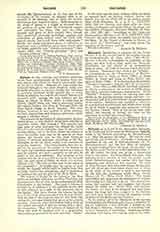

Balsamon, THEODORE, a canonist of the Greek Church, b. in the second half of the twelfth century at Constantinople; d. there, after 1195 (Petit). He was a deacon, nomophylax, or guardian of the Laws, and from 1178 to 1183, under the Patriarch Theodosius, he had charge of all ecclesiastical trials or cases. In 1193 he became Greek Patriarch of Antioch. Balsamon’s best work is his “Scholia”, or commentary on the “Nomocanon” of Photius, published first in Latin at Paris (1561), at Basle (1562); in Greek and Latin at Paris (1615), and again at Basle (1620). It is also found in Beveridge’s “Pandecta Canonum”, Oxford, 1672 (P.G., cxxxviiviii). From 1852 to 1860, Rhalli and Potli published at Athens a collection of the sources of Greek canon law which contains Balsamon’s commentary. In his “Scholia” Balsamon insists on existing laws, and dwells on the relation between canons and laws—ecclesiastical and civil constitutions—giving precedence to the former. Balsamon also compiled a collection of ecclesiastical constitutions and wrote other works, in all of which is apparent his animosity towards the Roman Church. Two of his letters were published: one treating of fasting, the other on the admission of novices into monasteries.
ANDREW B. MEEHAN

